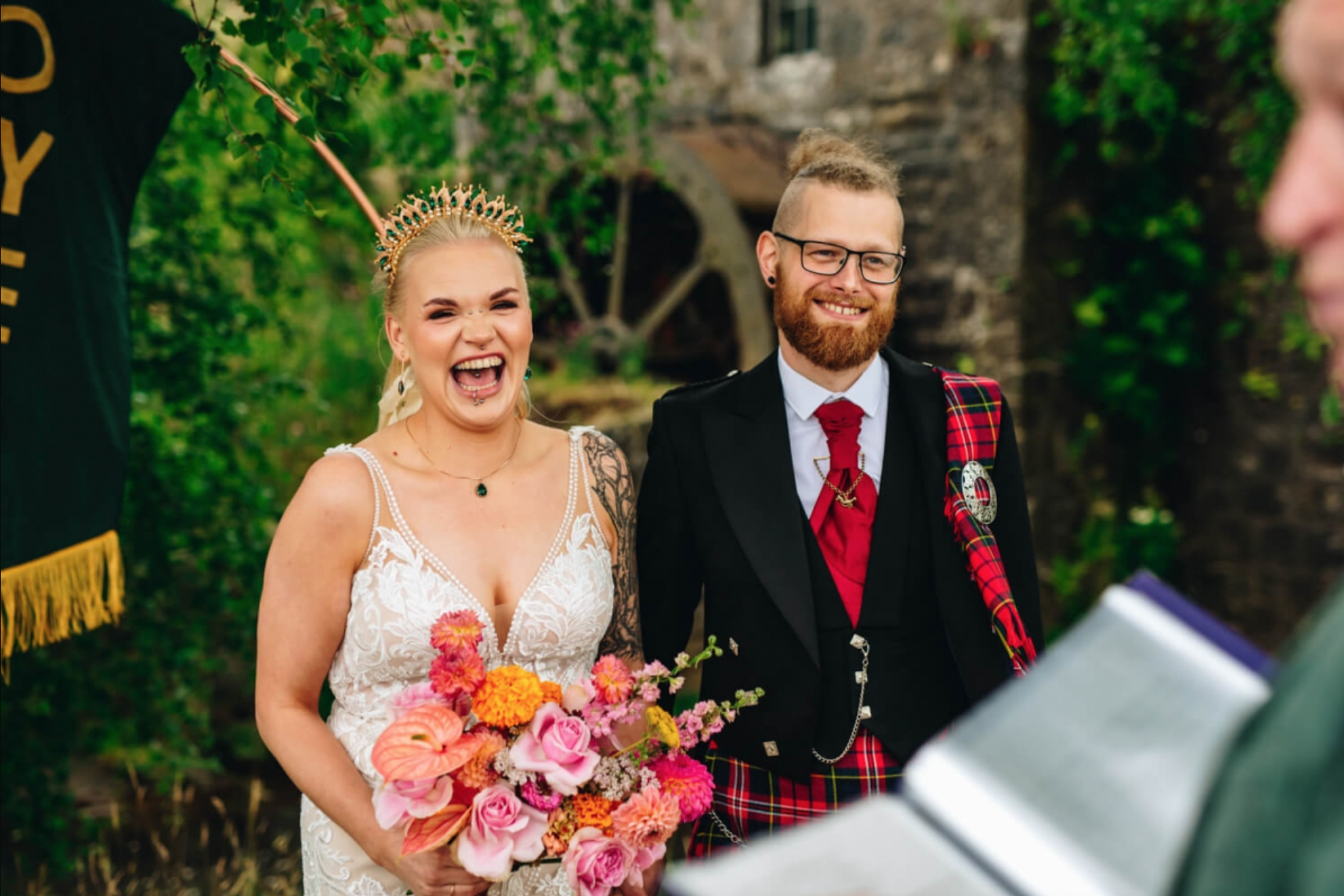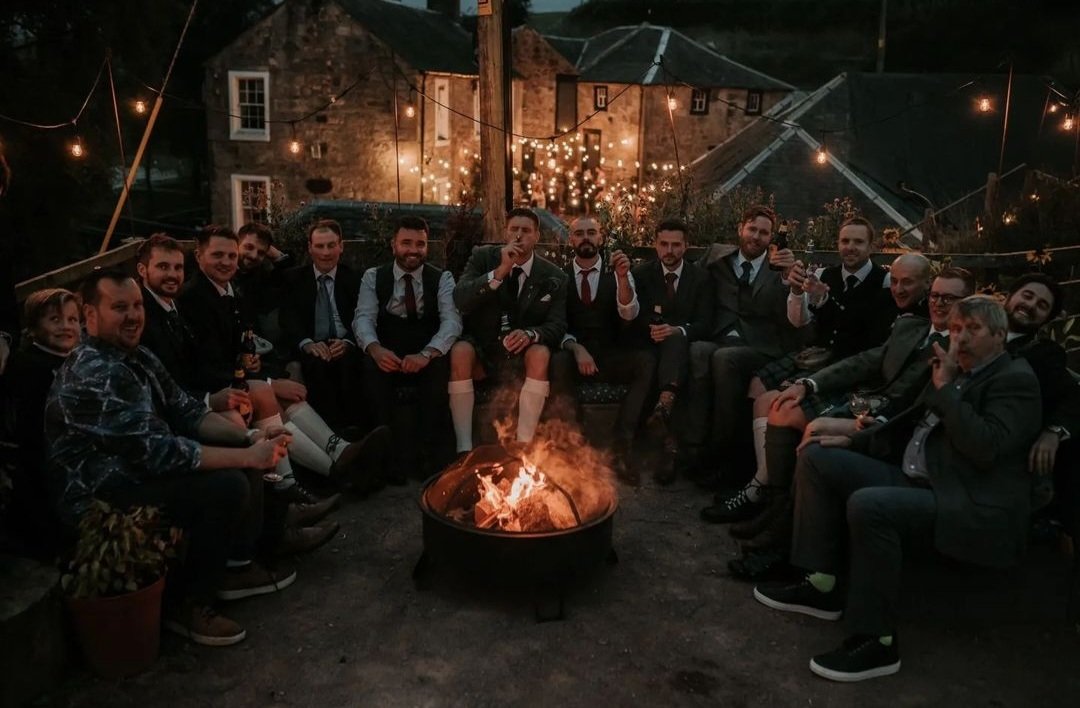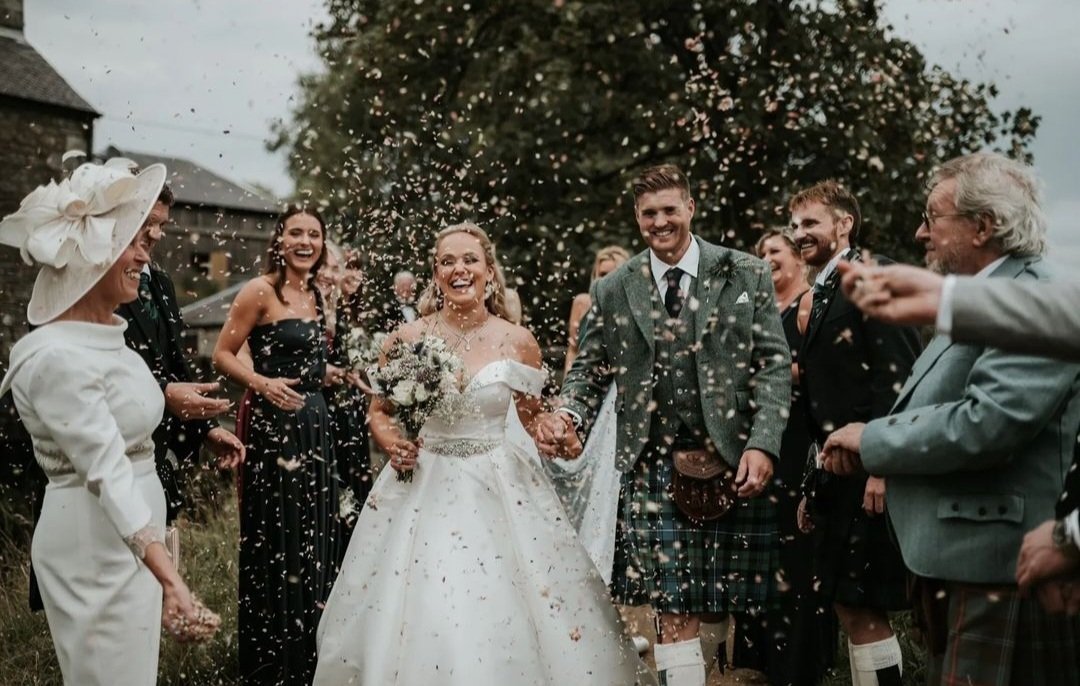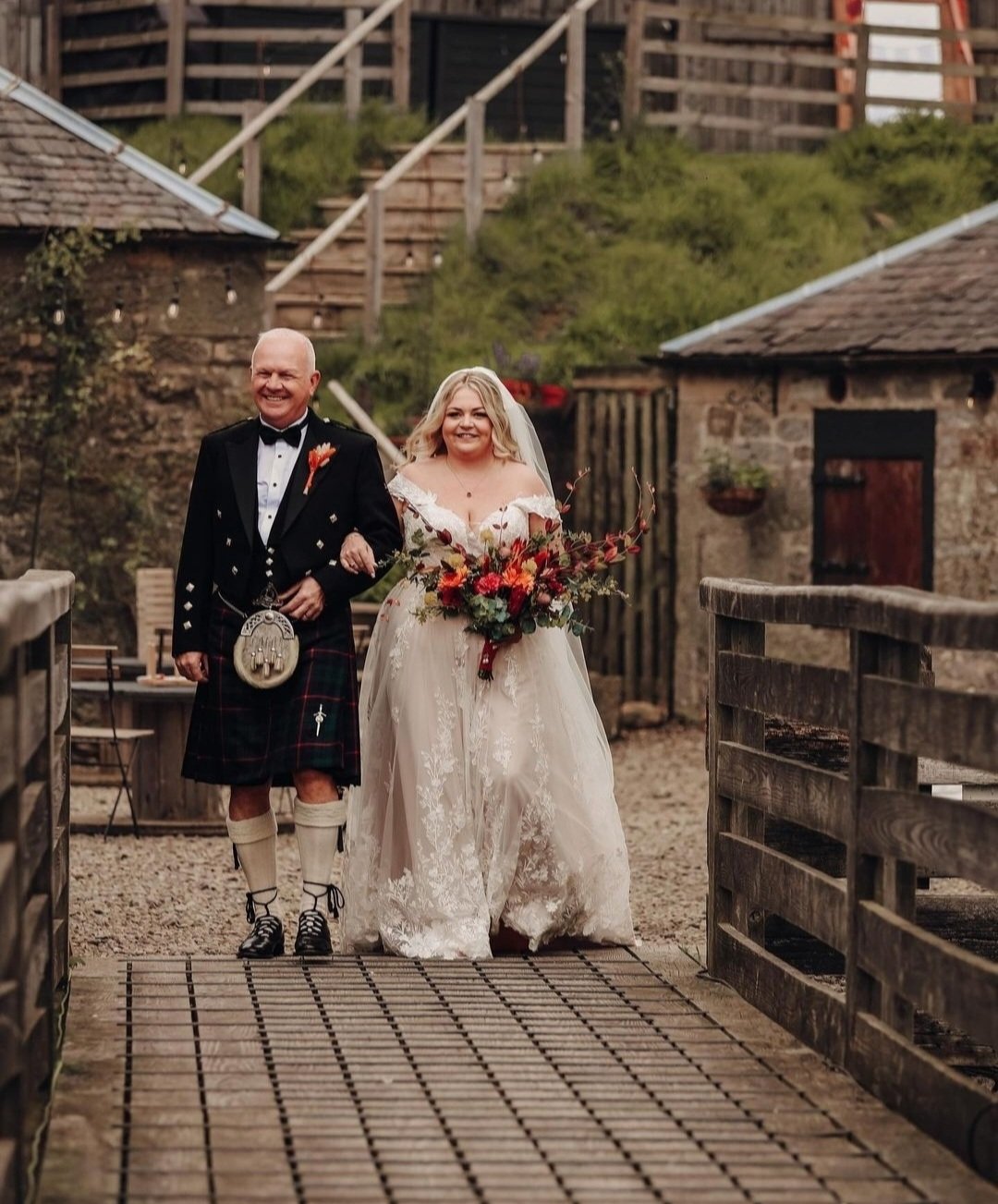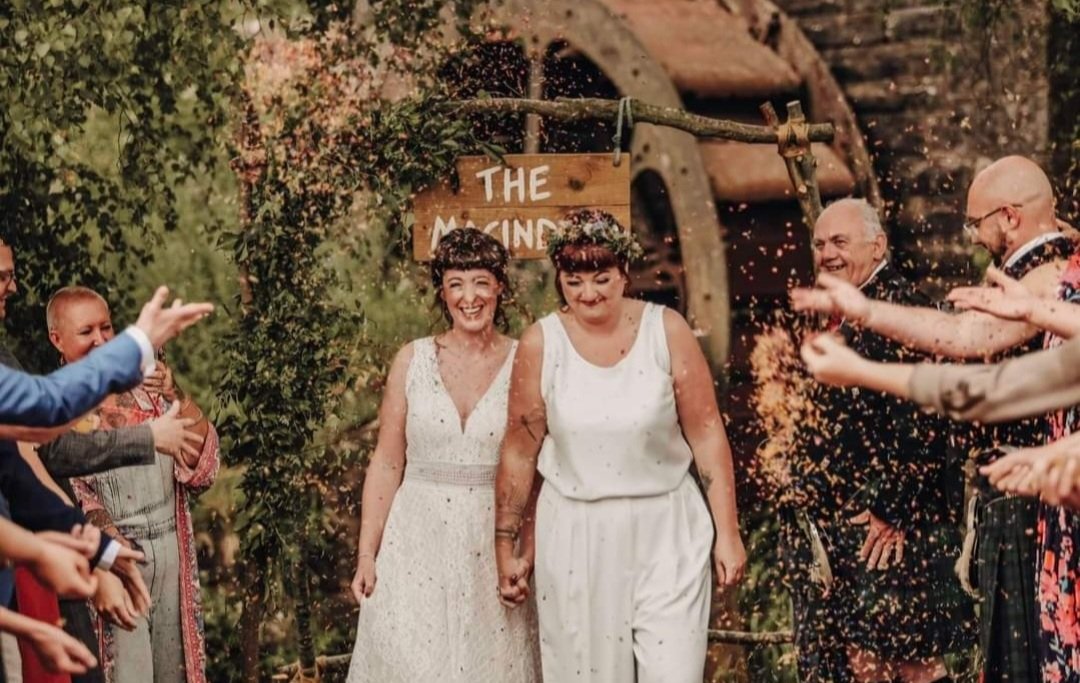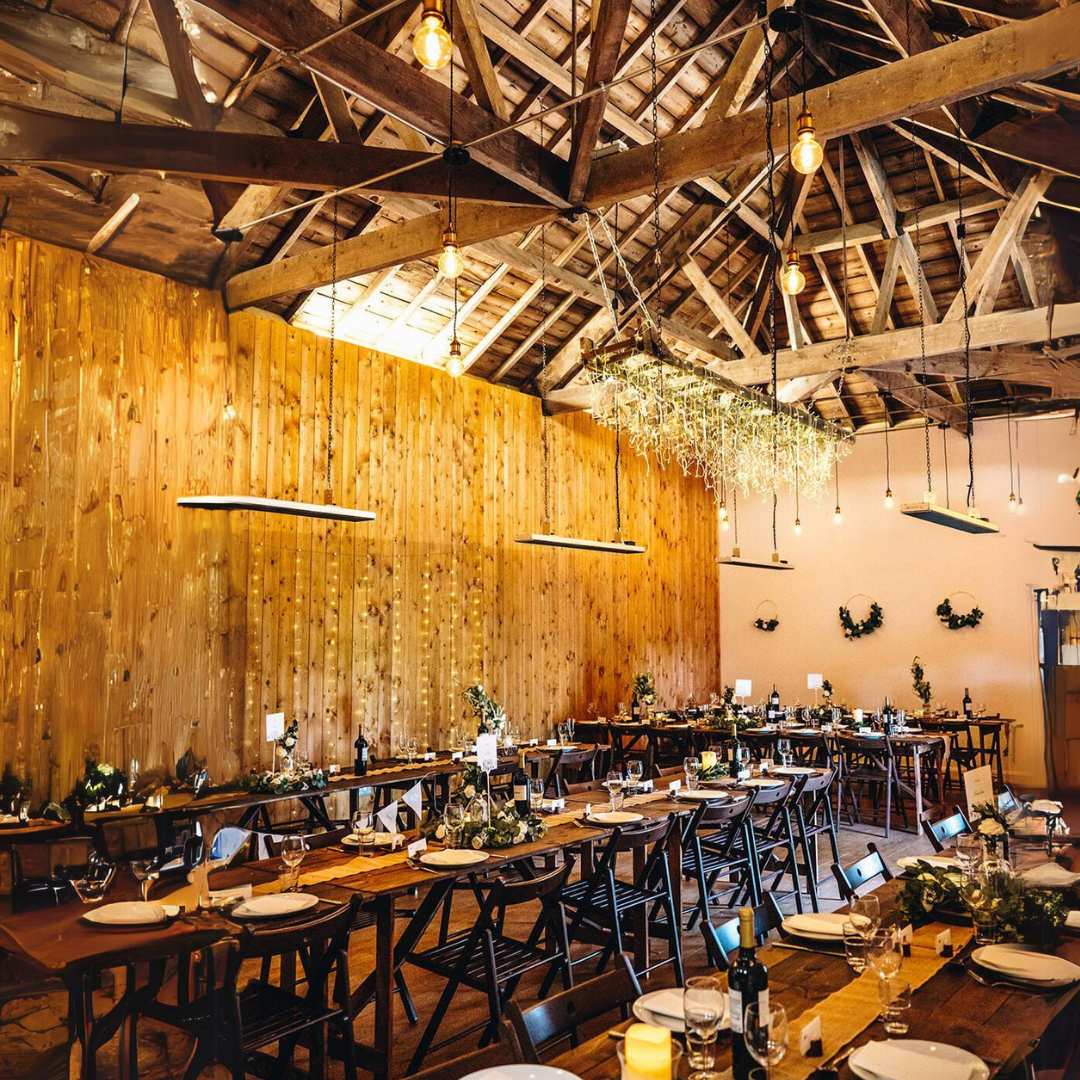A Dream Realised: Folkerton Mill Featured in British Vogue
Folkerton Mill as featured in Vogue.
We could hardly believe it when an email arrived with the subject line: “Invitation from British Vogue.” At first, we thought it must be a mistake—how could our rural wedding venue catch the attention of such an iconic publication? But as we read on, disbelief turned into sheer excitement.
The message was filled with praise for Folkerton Mill, recognising the charm, history, and uniqueness of our venue. To have British Vogue see the magic in what we’ve built was beyond anything we could have imagined. What started as a passion project—transforming a historic mill into a stunning wedding venue—was now being acknowledged by one of the world’s most renowned magazines.
Folkerton Mill had been hand-picked to be featured in ‘Vogue’s Venues,’ a special segment on weddings. To see our venue showcased alongside prestigious castles and renowned wedding destinations across the UK and Europe was truly surreal. British Vogue recognised the charm, history, and uniqueness of Folkerton Mill, and to be included in such an esteemed collection of venues is an honour beyond words.
With immense pride, we accepted the invitation. The next step? Selecting the perfect image to capture the essence of Folkerton Mill—its rich history, breathtaking setting, and the unforgettable weddings held here.
Now, the wait is over. Seeing Folkerton Mill in the pages of British Vogue is an incredible milestone, a testament to the passion and dedication poured into this venue. But none of this would have been possible without the couples who have trusted us with their special day. Your belief in our vision has made this journey possible, and for that, we are truly grateful.
And here it is… Folkerton Mill, proudly featured in British Vogue!
The History of Folkerton Mill
Whether you come for the history, the natural beauty, or the sense of peace it provides, Folkerton Mill is a place that leaves a lasting impression on all who pass through its doors.
The History of Folkerton Mill: A Scottish Gem
Nestled in the serene Scottish countryside, Folkerton Mill stands as a testament to Scotland’s rich farming heritage and the enduring spirit of its people. With its picturesque surroundings and tranquil ambiance, it’s easy to see why Folkerton Mill has become a beloved wedding destination for those seeking a retreat from the hustle and bustle of modern life and want a relaxed, rural wedding. But beyond its current role as an award winning wedding and events venue and a haven of relaxation, Folkerton Mill has a storied past that weaves through centuries of Scottish history.
Origins: The Early Days of Folkerton Mill
The origins of Folkerton Mill can be traced back to the late 18th century, a time when Scotland was experiencing significant changes in agriculture and industry. The mill was initially constructed as a water-powered grain mill, capitalising on the natural flow of the nearby river to grind wheat and barley into flour. During this period, small mills like Folkerton were essential to rural communities, providing a crucial service in processing the grains harvested by local farmers.
The mill's location was carefully chosen for its proximity to the river, which not only powered the mill but also provided a steady supply of fresh water. The original structure was built using local stone, reflecting the craftsmanship and resources available at the time. Over the years, the mill became a hub of activity, where farmers and millers worked side by side to produce flour and grain that would feed the surrounding villages and farm animals. It even hosted the marriage nuptials of the local people.
The Industrial Revolution: A Period of Change
As the Industrial Revolution swept through Scotland in the 19th century, Folkerton Mill, like many others, faced the challenge of adapting to new technologies. The advent of steam power and the expansion of railways brought increased competition from larger, more industrialised mills in urban areas. Despite these pressures, Folkerton Mill managed to survive by diversifying its operations and serving a loyal local customer base.
During this time, the mill also underwent several renovations and expansions. The original waterwheel was replaced with a more efficient turbine, and additional buildings were constructed to accommodate new machinery. These changes allowed Folkerton Mill to continue operating well into the late 19th and early 20th centuries, even as many other rural mills were forced to close their doors.
Decline and Transformation
By the mid-20th century, however, the need for small, rural mills had diminished significantly. Advances in transportation and industrialisation meant that flour production was increasingly centralised in large, mechanised mills. Folkerton Mill, like many of its contemporaries, gradually ceased its milling operations and fell into a period of decline.
For several decades, the mill stood largely abandoned, a quiet relic of a bygone era. Yet, despite its disuse, the beauty and historical significance of Folkerton Mill were not forgotten. In the latter part of the 20th century, efforts were made to preserve and restore the mill, recognising its potential as a cultural landmark and a symbol of Scotland’s rural heritage.
A New Beginning: Folkerton Mill Today
The restoration of Folkerton Mill marked a new chapter in its history. With careful attention to preserving its original features, the mill was transformed into a unique wedding and events venue that honours its past while embracing the present. Today, Folkerton Mill is a sought-after destination for those looking to reconnect with nature and immerse themselves in the peaceful beauty of the Scottish countryside.
The mill's historic buildings have been thoughtfully repurposed, blending old-world charm with modern amenities. Visitors can explore the mill’s heritage and the surrounding grounds, with their lush greenery and tranquil river, providing the perfect backdrop for celebration and events.
A Living Legacy
Folkerton Mill stands as a living legacy, a place where history is not just preserved but celebrated. Its journey from a bustling grain mill to a tranquil wedding and events venue is a reflection of Scotland’s ability to honour its past while adapting to the needs of the present. For those who visit Folkerton Mill, it offers not just a glimpse into history, but also a reminder of the enduring beauty and resilience of the Scottish landscape and its people. Whether you come for the history, the natural beauty, or the sense of peace it provides, Folkerton Mill is a place that leaves a lasting impression on all who pass through its doors.
Choosing Your Photographer
Photo: Natalie Martin Storyteller
TOP TIPS FROM A PROFESSIONAL PHOTOGRAPHER
Sarah from Bear and Butterfly Photography was kind enough to give me her top ten tips on how to get the most from your wedding photographer to share with you:
1. Your photographer will be your cheerleader and your best friend rolled into one. They will be there every at every step of the day to capture all the moments from very intimate and personal to the big celebrations. You want a photographer that you will connect with so that they can help keep you calm, reassured and excited so you can show the best version of your self on your big day. Make sure you meet with your photographer and pick a photographer you connect with and trust.
2. When your dress is boxed up, the food has been eaten and your cake has been cut, your photographs are all you have following your wedding day so make sure you love your photographers work. Spend time looking at portfolios, websites and social media to get a sense of your photographers editing style and the kind of images they capture. Do you want candid, relaxed, formal or something else?
3. Your wedding day is the one of the most important days of your life after all you have been planning and saving for it for so long so remember it’s not about being with your photographer every minute of the day. Choose one who will understand the importance of you spending time with your guests enjoying your day whilst getting everything you should from your photographs.
4. Ensure your photographer is aware of the style of photographs you like whether it’s entirely posed, relaxed and natural or a candid story of your day. After all it is YOUR day and your photographs. The last thing you want is to look back on your album and not recognise the people in it as it’s overly posed. Different photographers will have different or preferred styles so make sure you have a look at past work to really understand how and when they do their best work and decide if this will work with the celebration you have planned.
5. Relax. Have fun. Your photographs shouldn’t be a stress or worry on the day. I cannot stress how important this part is. Your photographer should make you feel relaxed and comfortable in front of the camera even the most confident of people can become a little camera shy at times!
6. Never look at the camera. It will force a ‘Chandler Bing’ smile where you not only feel but look uncomfortable. Come up with ideas to make you laugh on the day, like whispering your favourite cereals in a sultry voice to each other to make you laugh. This is the most natural type of photographs you will ever get and I promise it will be so worth it!
7. Ensure you tell your guests to take advantage of a professional photographer being there and to ask for photographs to be taken of them as a couple, or a family etc. It’s not often people get to have nice professional pictures after spending all that money on their new outfits.
8. If your photographer allows, ask if it’s possible to take advantage of an engagement/pre wedding shoot. It’s a fabulous way to get to know your photographer and to gain the experience of being in front of the camera which will give you peace of mind for on the big day.
9. Consider including your prep/ getting ready shots. Having prep/ getting ready images from your wedding day gives your other half an insight into all those little moments of the morning they have missed. It’s a wonderful surprise when looking at your finished gallery. Also, the day can feel like it goes very quickly so photographs throughout the entire day will help you remember all the good memories.
Photographs: Paul Budzinski Photography, capturing bridal prep.
10. Trust your photographer. Now this is a big one. By all means give a heads up of certain people you would like photographed that you feel your photographer may miss, though have trust that if you love your photographers work that they will capture the most important parts and people of your day without an added list.
Below are some photographs from real weddings at Folkerton Mill. All of these photographs are amazing and if you scroll through you will see that each photographer has a unique style and way of editing the photographs (please note that some of these photographs have been cropped slightly differently to the original to fit them in the grid). You can see examples of other photographers on our socials @folkertonmill on all platforms.
Key Takeaways
All photographers have a style and a personality, pick the one you click with and makes you feel comfortable, and the one whose work you fall in love with!
Vision to Venue
Our wedding was just the beginning.
Vision to Venue: Penny and Scott’s (co-owners of Folkerton Mill) journey to create a beautiful, exclusive-use, bespoke wedding venue
April 2025: Five Years In
I originally wrote this blog in April 2020. It was supposed to be the start of our first big wedding season at Folkerton Mill but instead we were plunged into lockdown due to COVID, and it was becoming increasingly obvious that things were not going to return to normal any time soon. So instead of getting ready to host dream weddings and celebrations, I was busy reassuring couples that we would help and support them in anyway we could. In reality this was a lot of tearful and emotional (me included!) conversations and the postponement of nearly two years worth of weddings. Five years later I can look back and reflect on this time, and some of the very bizarre rules even make me smile now; no alcohol, no dancing, no music, no indoor speeches, bubbles, one-way bar system, face-masks, two-metre distancing, requiring a list of all wedding guests and contact details, and the list goes on. However, amidst the chaos there were also some positives; we hosted some incredibly beautiful intimate events and we were also able to do a whole lot of work to improve Folkerton Mill the wedding venue.
Five years later, Scott and I are just a little over a month away from our 5 year wedding anniversary that marked the beginning of this crazy journey, and the Mill has gone from strength to strength. I am so excited for the future and I cannot wait to see where it goes in the next 5 years. We have some exciting ideas for growth and lots of things planned so watch this space and keep in touch so we can share that journey with you.
Pictures: The Folkerton Mill hay barn set up for a recent wedding, the Folkerton Mill courtyard in the early evening and lit with festoon lights, Scott and Penny (co-owners of Folkerton Mill) on their wedding day in 2019.
Continue reading to learn how this all began…
April 2020: The Beginning
It was love at first sight! It was a cold February afternoon and pouring with rain, and when I say rain, I mean that incredible horizontal kind of rain that you only get in Scotland! The wipers on our van were going at full pelt as we slowed down, pulled around the corner on the road and through a beautifully understated wooden gate on to the driveway of Folkerton Mill. Scott stopped the engine in the courtyard and the two of us just looked at each other and smiled. We sat in silence for a few seconds listening to the sound of the rain hammering down on the roof of the van, no words were needed, we both knew that we had just stumbled across something very special.
I feel like life has been non-stop since that rainy afternoon with one big life event after another. We were moved in to Folkerton Mill at the end of April with all three children in tow and a fourth one that arrived just six weeks later. The place had been empty for almost 18 months and the air inside the house was so cold you could see your breath, the wooden floor in the living room was buckled, the heating didn’t work and there were broken panes of glass in the sash windows. The first night we all slept in joggies and hoodies, the three boys had two duvets and all slept in the same double bed for warmth.
There were boxes down both sides of our bed and at eight and half months pregnant I had to sort of throw myself into the bed from the end and then hope that I didn’t need to get up to pee! It was so dark we couldn’t see our hands an inch in front of our faces and it was so incredibly quiet, we just loved the place. Three weeks after our little girl was born Scott (finally) proposed, making me the happiest girl in the world, and it is this event that was really the beginning of Folkerton Mill Weddings although we didn’t realise it at the time.
I don’t remember exactly whose idea it was (probably mine – Scott always needs to take a seat when I say I have an ‘idea’), but we decided that we would get married at the Mill. I mean what could possibly be more romantic than that, right!? Plus, although the house was totally liveable (once Scott had fixed the aforementioned issues!), the other buildings all needed a great deal of love and attention. Very little in the way of maintenance was carried out in the years before we moved in to Folkerton Mill and if we weren’t careful our beautifully constructed 200 year old sand stone buildings would deteriorate beyond repair, so it made sense to put our energy, time and money into starting to restore the place.
We gave ourselves two years to do the work that was needed to host our wedding at the Mill. At the beginning this felt like ages and even (I thought) factored in extra time for things to take longer than anticipated. You know, project managing 101; estimate how long you think a job will take and then times it by two equals plenty of time…right?
Cue the start of the most insane two years of our lives to date. I mean, in addition to all the normal stuff that brides have on their ‘ to do list’, I had things like re-point walls, put in drainage, fix roof, put in under-floor heating and fit a new floor, build toilets, build tables, build a bar and the list went on and on. As well as the family we both had full time jobs to juggle; we got up circa 0530, started work at 0700 (after a 60 minute commute), came home for about 1600; homework, tea, play, kids to bed; 2100 outside to work; midnight bed! And repeat.
Photos: the Folkerton Mill children, Scott and Penny (co-owners of Folkerton Mill) just married, the hay barn set up for Penny and Scott’s wedding in 2019, Scott proposing to me in the same barn before we fixed it up.
I would be lying if I said there weren’t some dark moments and at times I thought it was going to break me but our relationship never wavered and we learnt so much about each other; I am all about the big picture, Scott loves the nitty gritty detail, I am annoyingly optimistic, Scott less so, we both love a project in the rain (because generally speaking it rains a lot in Scotland), I make things look pretty, Scott makes sure everything is functional, I like to contemplate new ideas, Scott just likes to get the job done, I stress, Scott never gets stressed just brings me tea and chocolate. Opposites in many ways but seemingly we make a great team and we created something wonderful with genuine passion and love fundamental to it all.
The ups and downs, wins and losses, good days and bad days definitely brought us closer and made us stronger as a couple and a family and it was amazing to see all our hard work pay off. It culminated in the best day of my life when I got to marry my best friend and begin our married adventure.
I loved all the people we met along the way planning our wedding and the industry is just full of wonderfully creative happy people, who wholly invest themselves in making each and every wedding the best that it can be. We received so much encouragement and positive comments about the Mill that made it feel like such a natural step to turn our beautiful Mill into a wedding venue. The place is so unique and such a well kept secret it is lovely to share that with people and the income that we generate from hiring out the Mill is invested straight back into restoring Folkerton Mill. We hope this means that the Mill will be here for many more years to come as a piece of beautiful Scottish history and the perfect place for dreams to come true.
Why Sustainability Is Important To Me.
For me, sustainability is a commitment to make conscious choices about the things that are within my control, and lead by example for my children and fellow wedding industry business owners.
“For me [Penny, Co-Owner of Folkerton Mill], sustainability is a commitment to make conscious choices about the things that are within my control, and lead by example for my children and fellow business owners.”
Personal Values and Background
My passion for sustainability began as a lifelong interest but became a defining aspect of my life and the way I live during my academic studies. I studied Marine Biology at university and went on to complete a PhD on the effects of climate change on marine calcifying organisms. The in-depth knowledge that I gained during my studies made me acutely aware of the importance of making conscious decisions daily to help protect our planet — whether it’s recycling, reusing, upcycling, or reducing plastic waste, on a personal level it is all about the little things that we can do as individuals that will help to make a difference. Climate change, global plastic waste and other big environmental issues are known as "wicked problems" due to their extreme complexity, global interconnectedness, and the numerous stakeholders required to be involved to find a solution. If I start to think about how and what would need to be done to find solutions to all the big environmental issues it becomes completely over whelming. I remember during my PhD we would have a weekly meeting where everyone in the lab would get together to talk about science, results and experiments. There was never any positive news at that meeting and the science painted a very grim picture for the future. I always felt quite deflated after the meeting, and I think it was at this point that I consciously made a decision to focus on the things that I had control of and the things that I could do as an individual that were positive and good for the planet. Understanding the science and the severity of climate change has instilled in me a profound sense of responsibility to protect our planet and make conscious choices that align with that responsibility.
As a Mum
Sustainability is a cornerstone of my family life. I actively teach my children the importance of composting, reusing, and avoiding waste. We embrace buying pre-loved items, showing that joy and value can be found in second-hand treasures while helping the planet. By engaging in debates and discussions about how the world works, in terms of biology and science, and why it’s crucial to look after the Earth, I aim to instil a sense of respect and love for our environment in my children. It’s about making sustainability a natural part of their lives—something they’ll carry into adulthood.
The rewards of these practices are immense. Not only do we feel good about our contributions, but my children also develop a love and respect for the planet by participating in activities like growing flowers, fruits, and vegetables. This connection to nature and being outside is beneficial for their mental health and allows them to see first-hand the value of a healthy natural environment, and the excitement of visiting pre-loved shops often means they get more for their money. Watching my little girl’s eyes light up in a pre-loved shop where she can get so much with her pocket money is a joy that money can’t buy.
Photographs: Penny (co-owner of Folkerton Mill) on the RSS James Cook researching the impact of climate change on deep sea coral, Penny & Scott (married co-owners of Folkerton Mill) with the children up a mountain, Penny graduating from Glasgow University as a Dr. (PhD)
As a Wedding Venue/Business Owner
At our wedding venue, Scott and I have implemented numerous sustainable practices. We recycle and reuse everything, from building materials to decorations. For instance, the wood from the tables used at our wedding was repurposed to create the floor in our office. We prioritise repairs over replacements and let parts of our garden grow wild to support local biodiversity. We’re fully electric and have installed infra-red heaters to heat our buildings. All waste is either recycled or composted, and we include a bus in our wedding package to reduce the number of cars at the venue. We even supply natural confetti, and we proudly serve locally sourced drinks to minimise environmental impact of stocking the bar and also promote and support some of the very best Scottish and British makers.
Our sustainability ethos is something that is often important to our clients, but our focus around sustainability is about the way we run our business, and we love and welcome all weddings. When asked, we do offer advice and guidance, and a lot of our clients embrace the natural beauty of our venue, reducing the need (and cost!) for additional decor. We also make wedding décor items no longer required by couples available for other couples to up-cycle and re-use. We have an endless supply of empty gin/ wine/ beer bottles and jam jars that look amazing with flowers on the tables.
Clients have positively noted our sustainable practices, appreciating our commitment to protecting the environment while providing a beautiful venue for their special day.
Photographs: The courtyard at Folkerton Mill with some of our free range ducks (pets not food!), the naturally beautiful ceremony area under the Silver Birch at Folkerton Mill, Penny and Scott (married co-owners of Folkerton Mill).
Impact and Inspiration
Our commitment to sustainability has shown that it’s possible to create a successful wedding venue business while minimising our environmental impact. By starting small and making sustainable practices habitual, we’ve demonstrated that every effort counts. My advice to other business owners and parents is to begin with small changes and build from there. Research, thoughtful spending, and conscious choices can lead to better, more sustainable practices.
Future Goals
Looking ahead, I aspire to become a leading advocate and trendsetter for sustainability in the wedding industry. I hope to offer advice on best practices and building a environmentally conscious business. The increasing focus on sustainability is exciting, and I am optimistic about the future as more businesses embrace environmentally friendly practices. For me, sustainability is a commitment to make conscious choices about the things that are within my control, and lead by example for my children and fellow business owners.
















